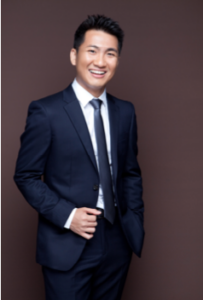 Webex Link: http://s.uconn.edu/meseminarf90
Webex Link: http://s.uconn.edu/meseminarf90
Abstract: Fluid-Structure Interaction (FSI) is a multiphysics phenomenon that occurs when moving or deformable structures interact with internal or surrounding fluid flows. The coupling between the dynamics of the fluid and mechanics of the structure often gives rise to unexpected behaviors vital to many science and engineering problems. In this presentation, I will discuss a new computational FSI framework developed based on isogeometric and immersogeometric analysis with application to the modeling and simulation of biomedical and aerospace problems. The fully-coupled FSI formulation is derived using the augmented Lagrangian approach to enforce kinematic and traction constraints and naturally accommodates nonmatching and non- boundary-fitted fluid-structure interfaces. This novel method can make direct use of the CAD boundary representation of a complex design structure and effectively deal with FSI problems involving large deformations of the fluid domain, including changes of topology. The key ingredients to achieving high simulation accuracy will be reviewed. The proposed FSI framework is applied to engineering and science applications at different scales, ranging from studying complex military aircraft tail buffeting due to different angles of attack to understanding prosthetic heart valve leaflet flutter under physiological conditions. The findings and challenges will be shown and discussed in detail.
Biographical Sketch: Ming-Chen Hsu is an Associate Professor in the Department of Mechanical Engineering at Iowa State University. He received his MS degree in Engineering Mechanics from UT Austin in 2008 and PhD degree in Structural Engineering from UC San Diego in 2012. From 2012 to 2013, he was a postdoctoral fellow at the Institute for Computational Engineering and Sciences at UT Austin before joining Iowa State University. He is the recipient of the 2019 USACM Gallagher Young Investigator Award and is listed as a Web of Science Highly Cited Researcher from 2016 to 2019. He has published over 70 peer- reviewed journal papers and serves on several national and international professional society committees on computational methods and applications. His research focuses on computational mechanics, engineering, and sciences with an emphasis on fluid-structure interaction problems.